Yesterday I posted only a single preview image of a juvenile Red-tailed Hawk behavior for reasons I explained in that post and I promised to fully document the behavior with many photos soon. Today I keep that promise.
The following photos are documentary in nature and some of them have flaws including slight softness, underwing whites with little detail in the bright sun and even a few cut off body parts. But I think they more than adequately document the behavior and illustrate why I believe my explanation for the behavior is correct. All red-tail photos were taken in the mountains six days ago and are posted in the order they were taken. I don’t know the sex of the hawk but this time I’ll refer to it as a female so I can avoid repeated use of that dreaded word “it.”
Ok, here’s the answer to the “cliff-hanger” I left you with yesterday. I believe this young hawk was repeatedly practicing landings. Landings of all types, including in the image I posted yesterday. Young hawks actually have to learn how to take off, fly and land and we all realize at least to some degree how complicated and well-timed those actions have to be. It takes practice. Lots of practice.
Review my evidence below and see if you agree with my explanation of the behavior.
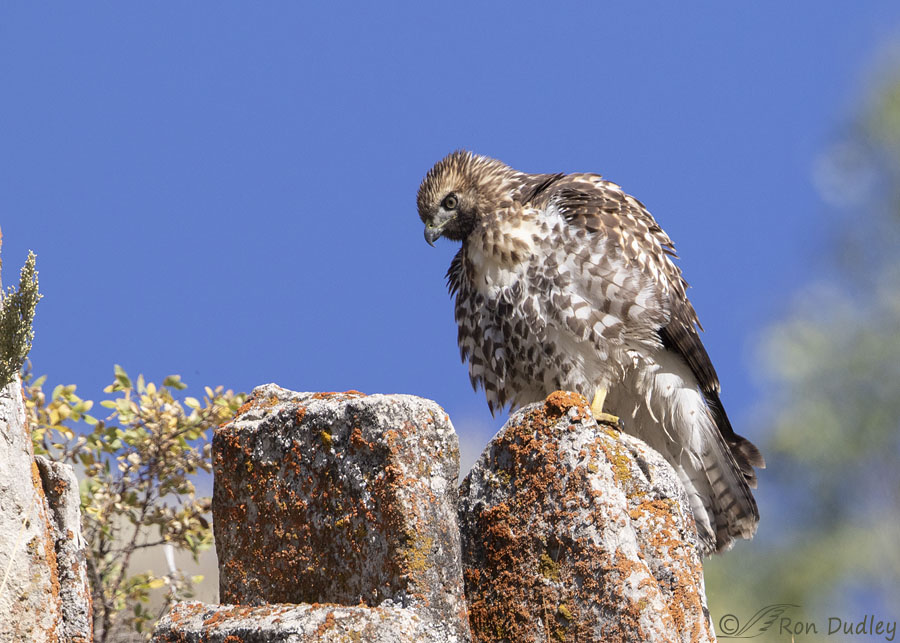
She had her eye on the rock in front of her as a potential perch almost from the moment she landed on the rock she’s on. An adult would probably just step from one to the other but for such a young hawk it must have been a challenging maneuver because she sure seemed to think about her plan of attack.
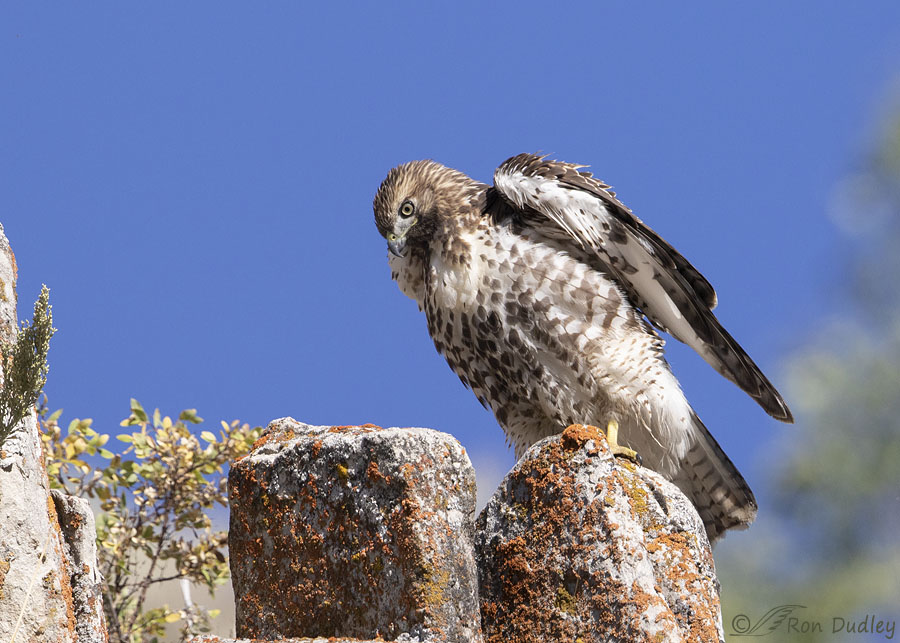
She decided to fly-hop the short span using her wings for assistance. My shutter timing didn’t catch her in mid air but…
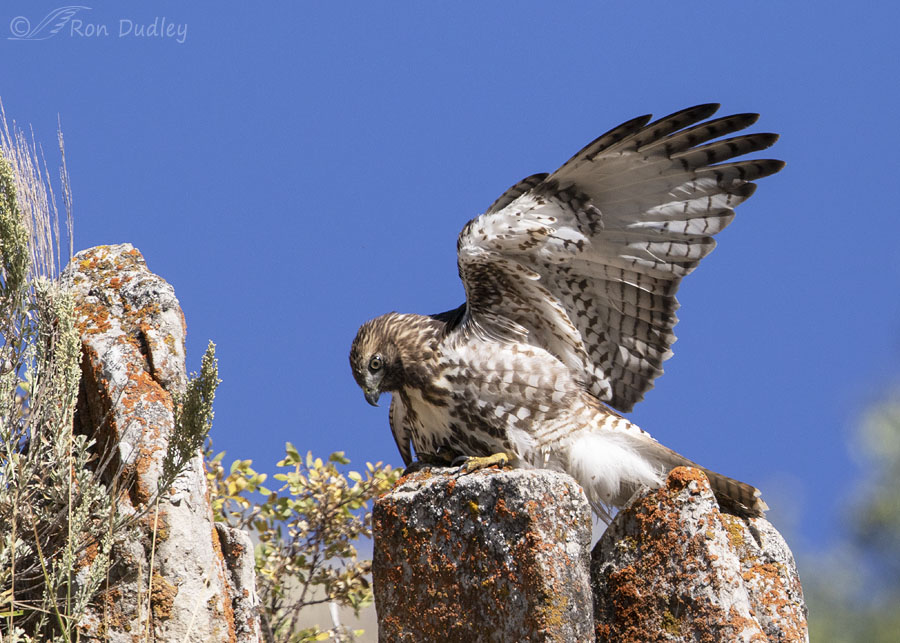
her incredibly awkward landing illustrated why she was nervous about it – her “aim” wasn’t the best and her right foot apparently slipped off the back edge of the rock so she almost fell off.
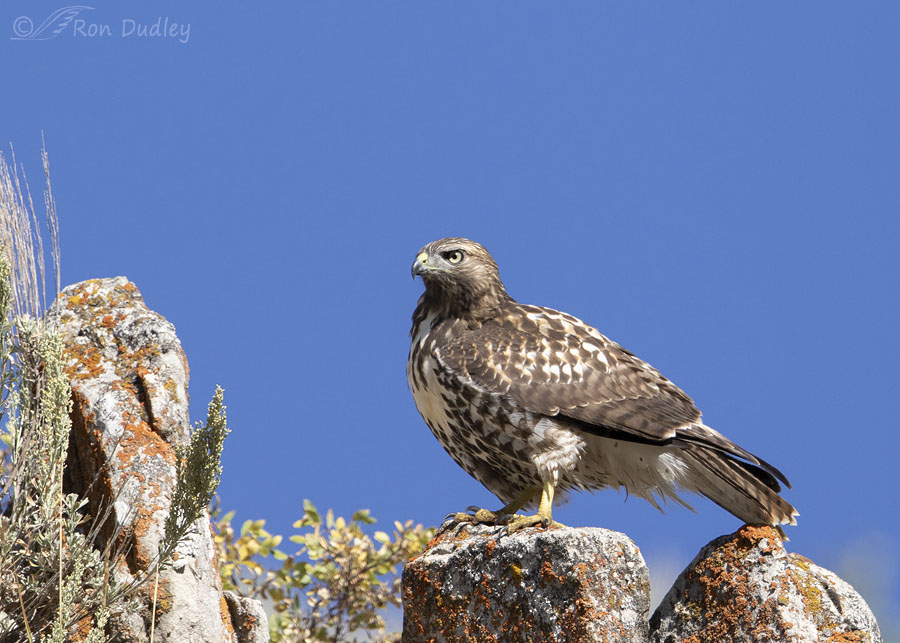
Almost immediately after regaining her balance she began to look for her next destination. She chose another rock perhaps 20′ in front of and slightly below her but…
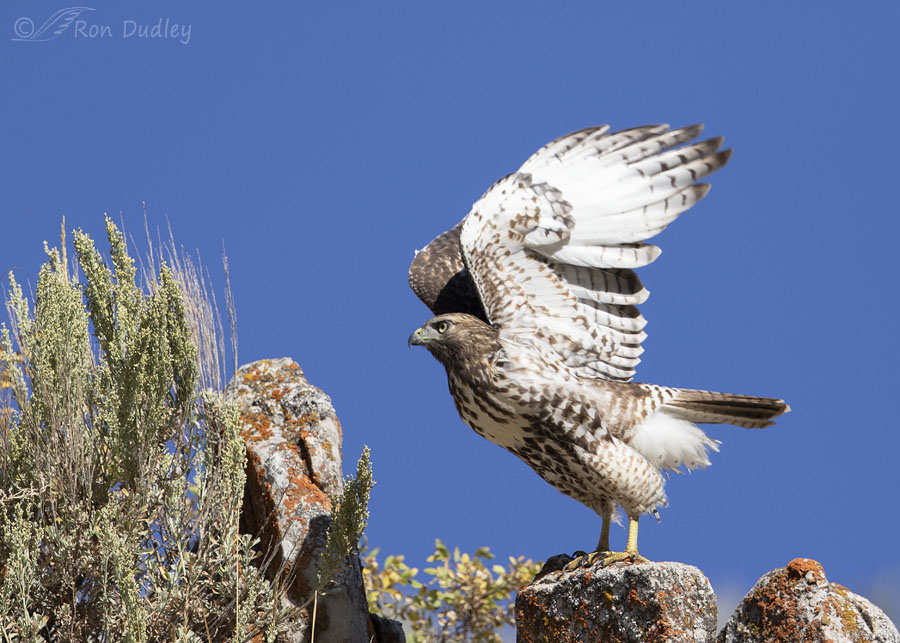
she had to clear the rocks, sagebrush and grass…
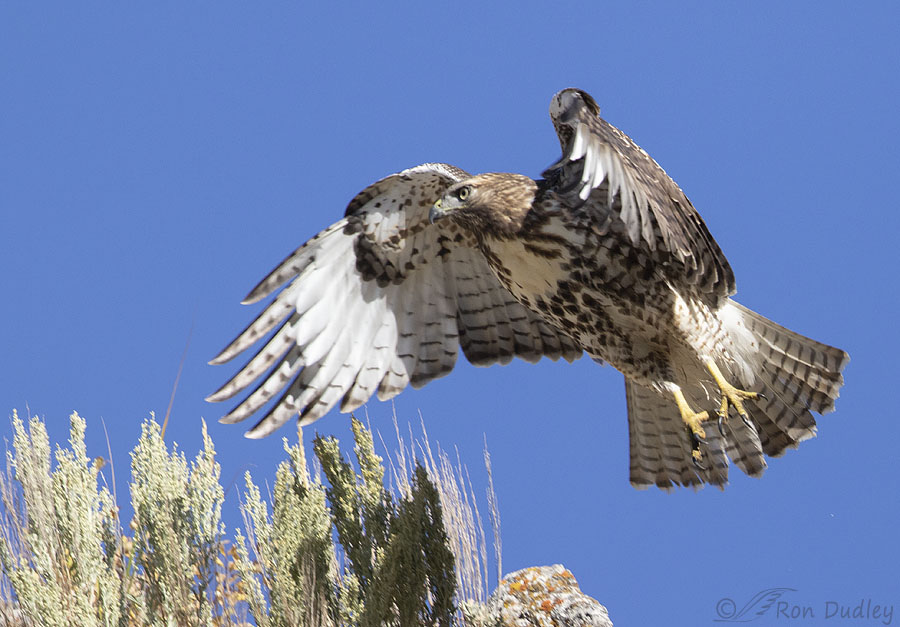
directly in front of her and then drop down again onto her intended perch.
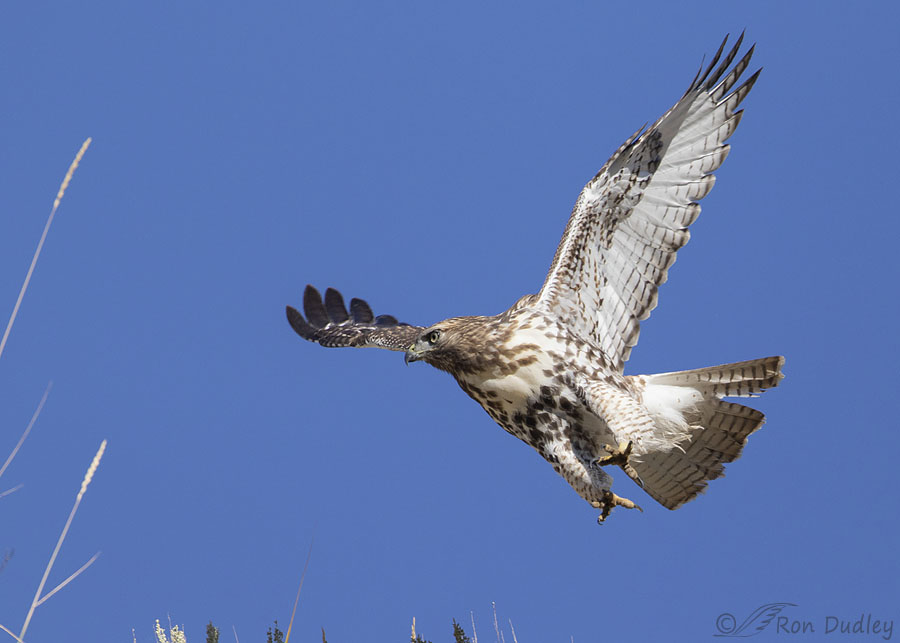
At this age they can be just as awkward in flight as they are on the ground – notice her kittywampus leg and foot positions.
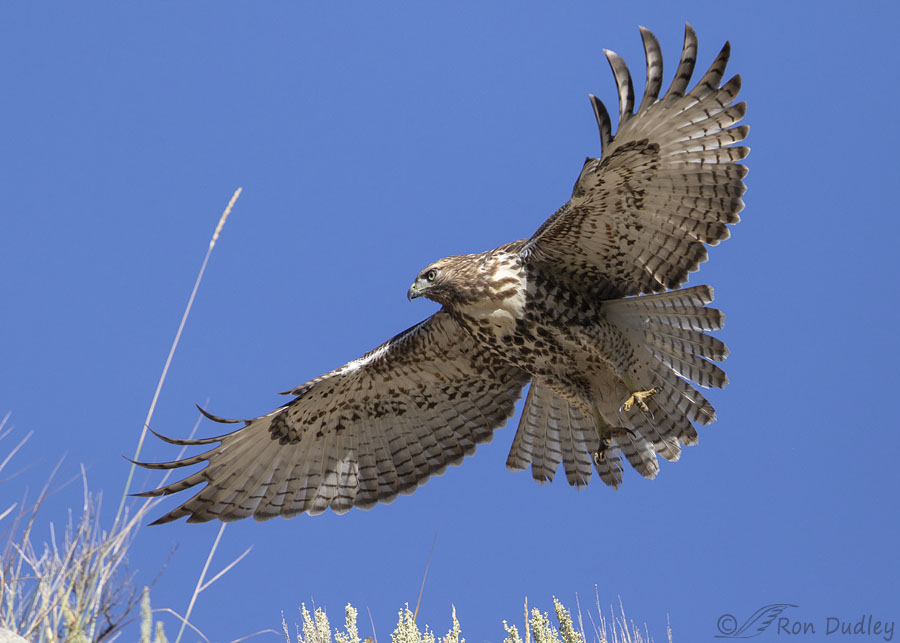
As she began to clear the taller grass she was a little too close to me for flight shots so I amputated some body parts in several of my images. I was lucky with this one – the photo is full frame (uncropped) except for a narrow slice taken off the right.
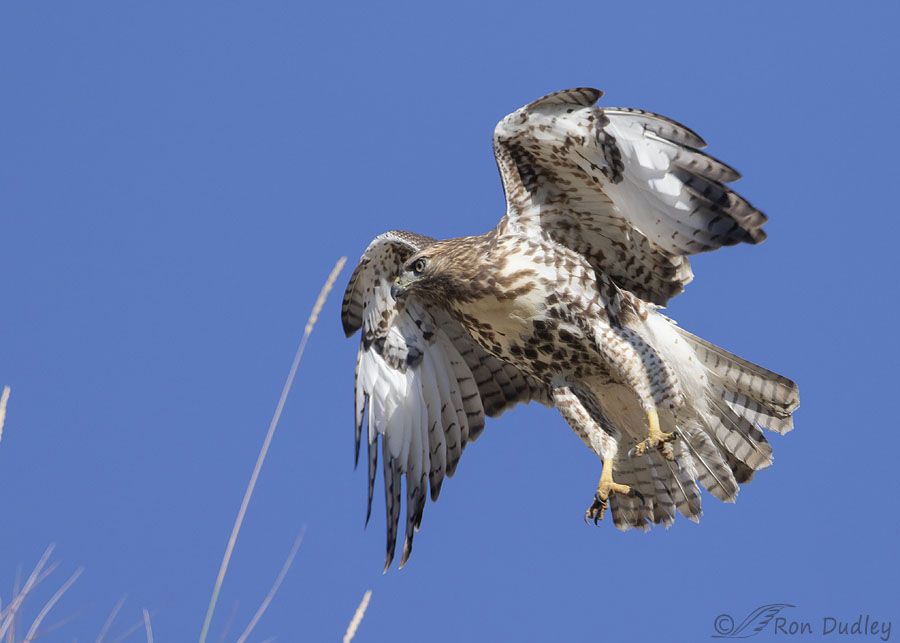
By now I believe she had a clear view of her intended perch.
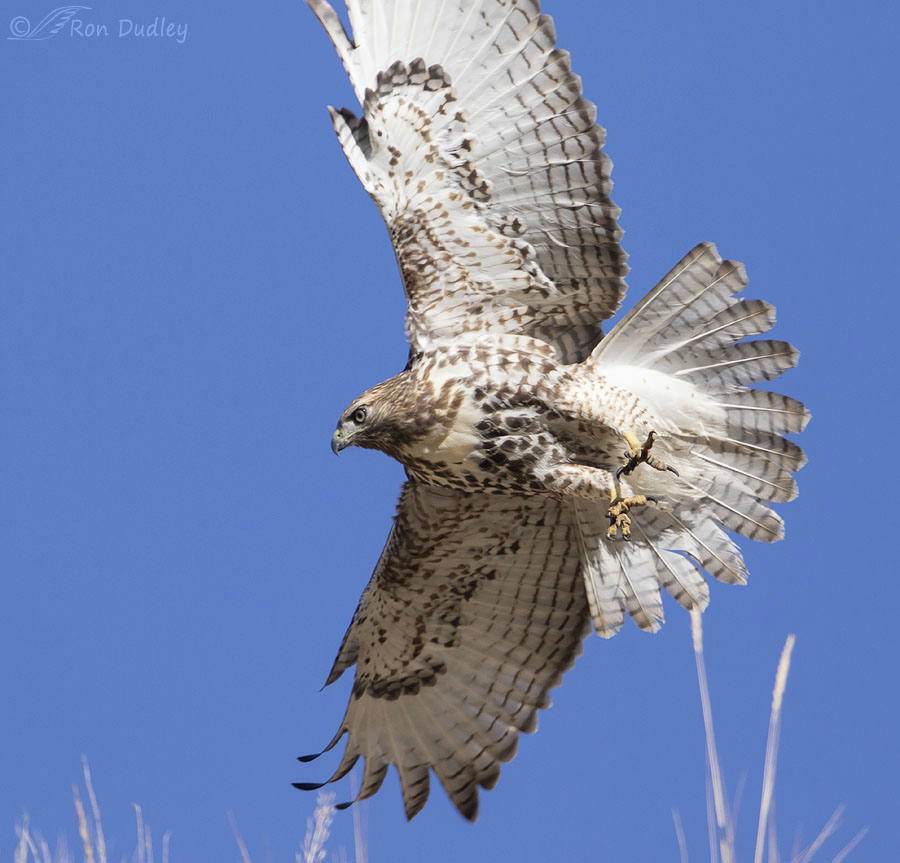
With this vertical wing position I had no chance of avoiding cut off body parts.
Since at the time I didn’t know where she was going it was at this point that I lost focus on her.
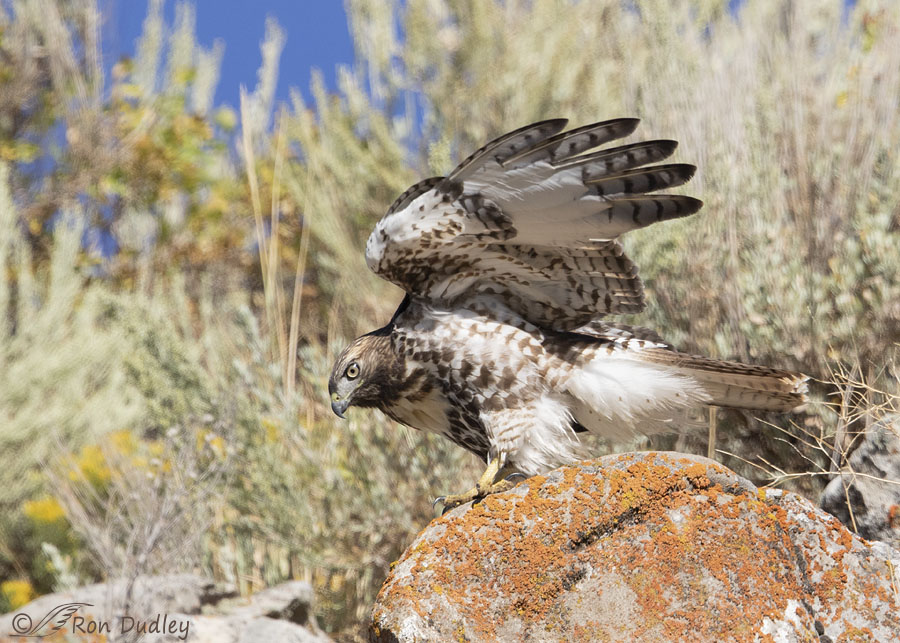
I regained focus soon after she dropped down and landed on her new perch.
But she barely had her wings folded before she half jumped and half flew down to…
yet another rock in front of and almost directly below her. This is the photo I posted yesterday.
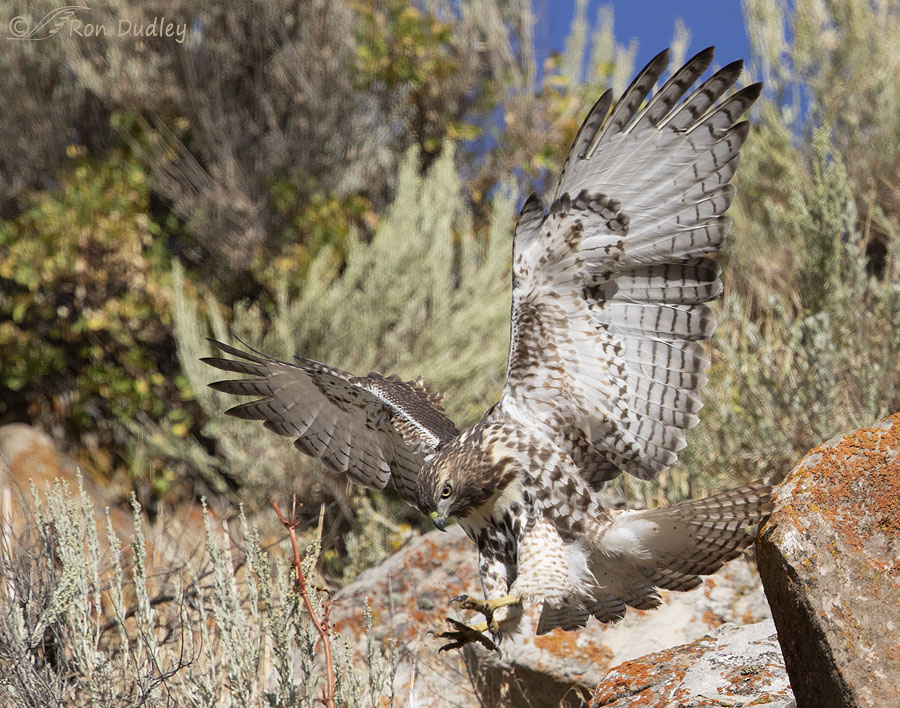
She slowed her landing with her wings but even so I lost focus on her once again…
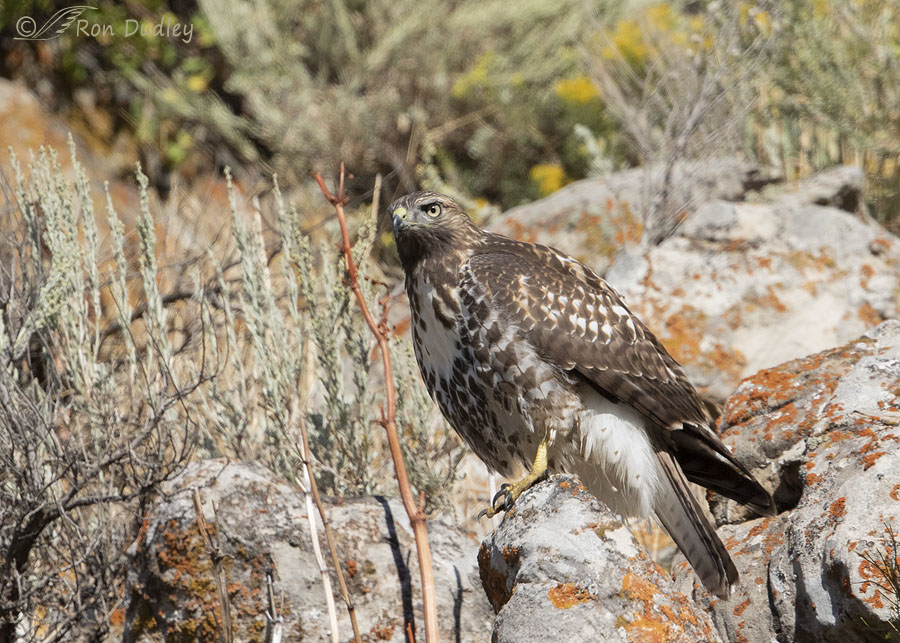
until this shot as she very briefly posed on her new perch before…
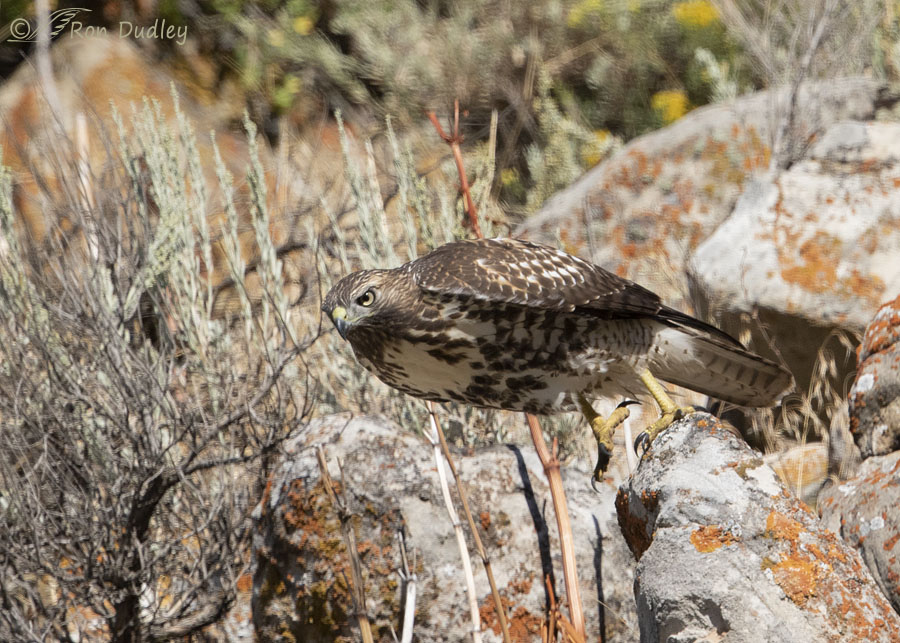
launching once again to another destination.
Obviously she didn’t confide in me regarding her motivation for going from perch to perch this many times in such a short period so I can only speculate. It could have been a deliberate learning behavior or simply play with learning as a by product. Just as in human children play has considerable learning benefits. The behavior allowed her practice in landing, takeoffs and flight so it had to be beneficial for her at this young age.
And now you know the rest of the story. Apologies for the delay.
Ron
Notes:
- This from Cornell’s Birds of North America Online regarding similar red-tail behavior: “During the first 3 wk after fledging, activity level doubles. Simple perch-to-perch flight is most common (92% of all flights).”
- Image techs for the photos above were: 1/1250 – 1/3200, f/6.3, ISO 640 Canon 7D Mark II, Canon EF 500mm f/4L IS II USM + EF 1.4 III Extender
Addendum:
1/1600, f/7.1, ISO 250, Canon 7D Mark II, Canon EF 500mm f/4L IS II USM + EF 1.4 III Extender, not baited, set up or called in
This Brown Pelican on the Bear River has the local birding community all abuzz, in part because they’re so rare in Utah. I believe this is only the 10th confirmed sighting of the species in the state. I’m not one to chase rarities but how could I not stop for photos yesterday morning on my way to and from Bear River MBR?
I’ll only include one pelican photo here because I’d say 17 images in the same blog post is pushing the limit already. I believe 17 photos ties a Feathered Photography record.


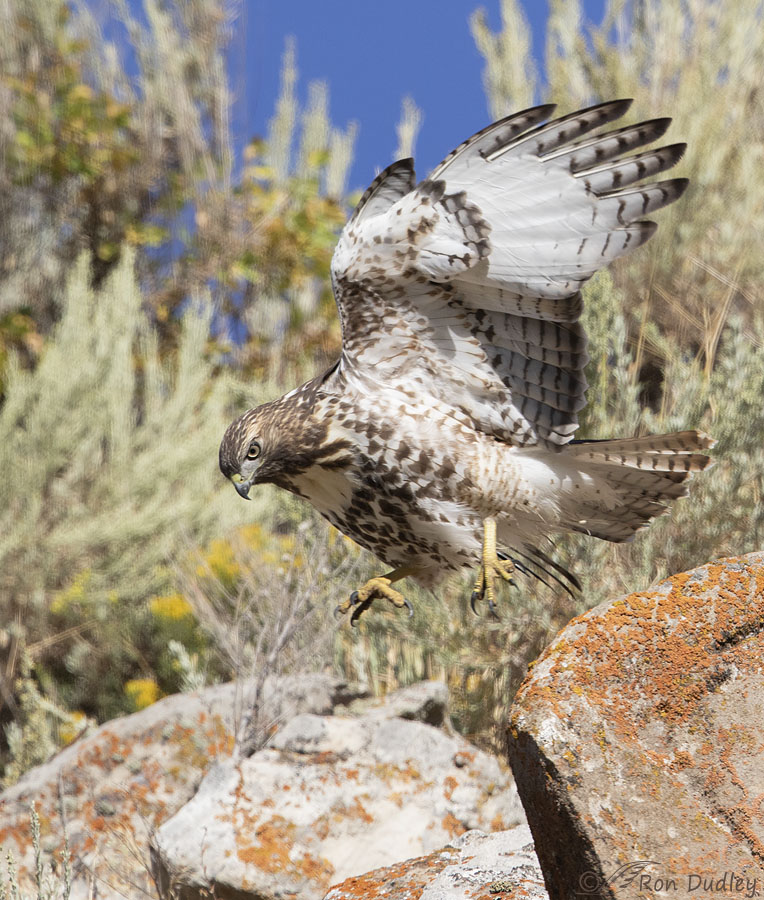
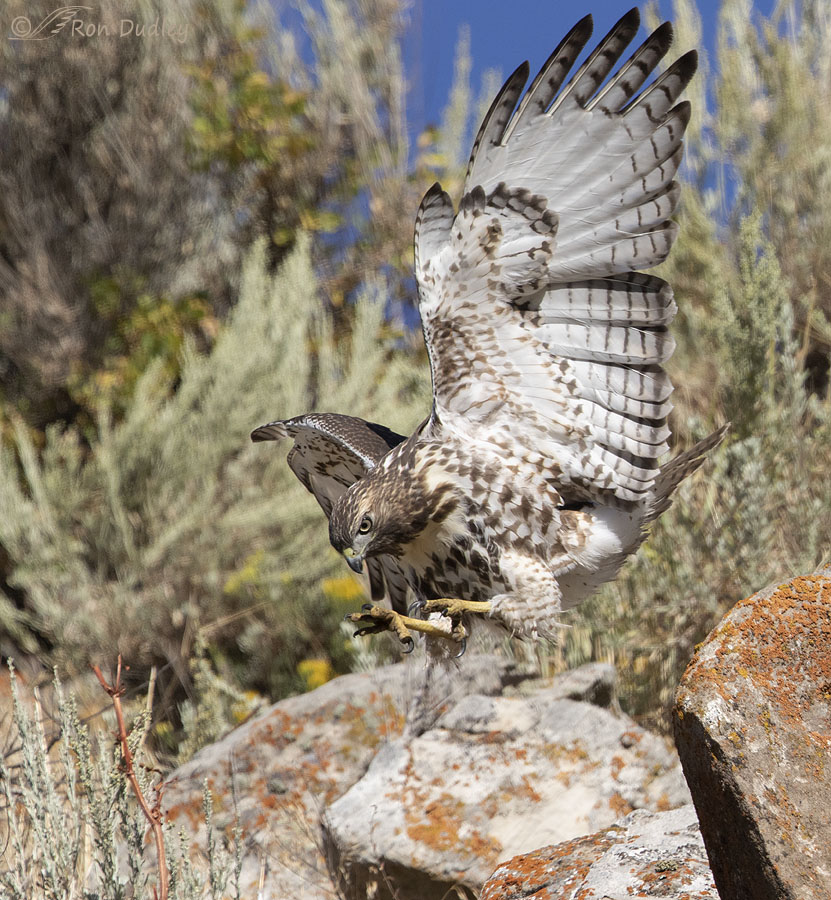
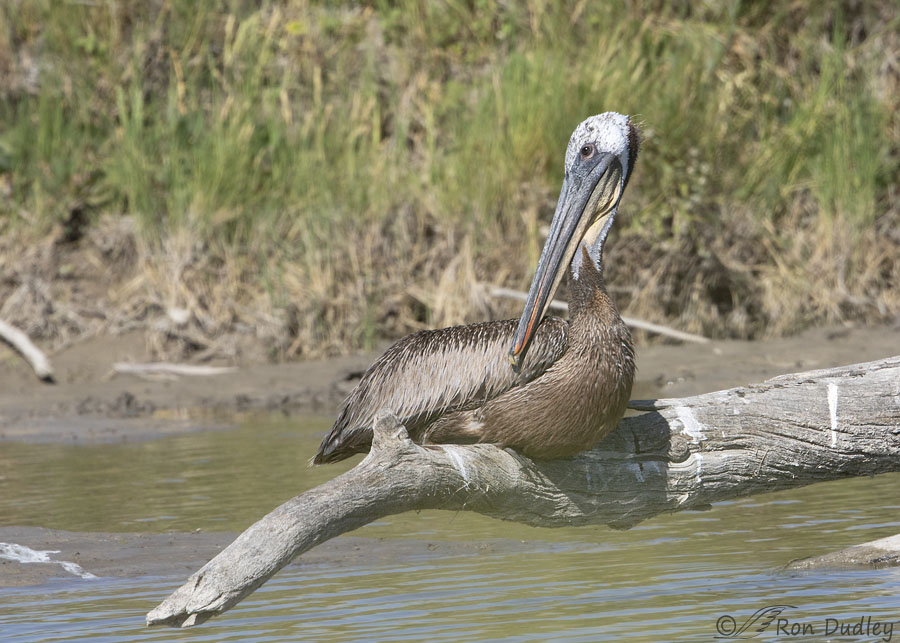
I worked for a guest ranch a number of years ago and there was a nest full of red-tail Hawks there. I was too busy to stop for long but would observe for short spaces of time and it was so interesting, although I wish I knew then what I know now. With all that in mind, I enjoyed your series of photos and commentary. I saw a documentary on CBC recently about animals playing and learning through play.
Such a fun series of shots ❗️
Definitely not where I was thinking this story was going😁
I’m glad you enjoyed it. Thanks, Diana.
Practice and more practice, that’s what it takes, just think about all the complexities, variables and obstacles these youngsters have to overcome. Perch to perch at 90%-plus really shines a light on just how much practice it takes. I always am in awe whenever I am lucky enough to be present to watch raptors come in for a landing, it’s such a thrilling moment.
Really fun and educational series, congratulations Ron on knocking it out of the park on this and so many of your fine postings.
Loved the in-depth observations and the abundance of photos.
That Brown Pelican looks mighty distinguished on that great weathered rest. We’re lucky to have the regular presence of Browns out here and they are always a show stopper for me.
Cheers
“Loved the in-depth observations and the abundance of photos”
I appreciate that, Dave. Whenever I publish one of these marathon posts I’m always afraid I “talk” too much, at least for some viewers. But it just doesn’t make sense to me to post them without explanation and sometimes there’s a lot of “splaining” to do.
I especially enjoy seeing your shots of juveniles practicing their different behaviors. So much fun to watch and learn along with the raptors! This series reinforces why I enjoy watching the raptor nests online, because I can watch the youngsters hone their skills. I’m fortunate that I’ve been able to watch my fosters improve their skills over the past week — they were little teetering snausages when I got them and now they’re actually puppies — bouncing, playing and tussling with each other — true running should start in the next week or so. My hypothesis is that many of these behavior patterns (especially those related to posture/gate/locomotion) are innate, but to do them skillfully takes A LOT of practice. How’s that for fence-sitting. 😉
Fun to see a Brown Pelican as a “rarity” through your eyes — I see them all the time around here. They’re a blast to watch! 🙂
Thank you, Marty. I wouldn’t argue with your hypothesis.
If indeed she is ‘just’ learning she is well on the way to being a mistress of the landing art. Practice does indeed make perfect (or close to it) for red-tails and photographers.
This is yet another truly delightful and educative post.
And goodness your pelicans are different to ours, while being instantly identifiable as pelicans just the same.
Thank you, EC. While we were photographing this one Mia actually said that she wished she’d been able to photograph an Australian pelican while she was there.
It never occurred to me that these were learned rather than instinctual behaviors. I learn something new every day upon reading your posts. You have the rare Brown Pelican in your neck of the woods; here in the NW corner of Washington we have a Great Egret. I think my neighbor might have been the first to sight it while walking his dog.
Lyle, to some degree I made the same assumptions when I first started photographing birds – that those skills were instinctive rather than learned. But it didn’t take much time watching young hawks before I began to suspect otherwise.
They are so much fun to watch. Great series. Lovely picture of the Pelican.
Thank you, Jean.
Redtails tend to be very contemplative when they have the time. Sometimes acting immediately is necessary, but given the time, they think about things–how they’re going to attack a situation. Additionally, there’s the issue that flying and landing are two entirely different skill sets! Both have to be perfected to avoid those pesky crashes 😉
My guess was off, but not far off! I guessed that she (and I agree that’s a girl for whatever THAT’S worth in the 50-50 odds category) was about to pounce on a sibling. Yes, play is very important at this stage and while many of their behaviors are hard wired, they’re akin to us learning to walk. It takes some practice to really get the hang of it and figure out how all the parts work effectively.
Have I mentioned I love redtails? And lichen? And your photography? I do!
Laura, the things you mentioned are the same as what I’ve observed in the field with red-tails. Nice to have my observations and interpretations confirmed. Thank you.
You’re welcome. I’ve learned a few things over the years and darned if the raptor stuff sticks! 😉
Congratulations on this excellent series. It appears to me that Hawk is practicing. Just yesterday I read that several hundred Cooper’s hawk skeletons had been reviewed, and something north of 20% showed rib and breast bone fractures – of course, Cooper’s hawks throw themselves headlong into brush, but the point remains that you have to practice. . .
Exactly, Martha. The lifestyle of any raptor is hazardous, perhaps accipiters especially.
Great series about learning take offs and landings. It reminds me of your posts about the young red-tail who practiced walking on the rusty fence. Your shots sure document and detail some wonderful behavioral sequences!
You remembered that one! That was one of my favorite experiences with raptors, Pam. Thank you.
Ah-ha! Great post – so interesting. And the photo’s are great too, of course! Thanks.
Thank you, Joanne.
I love this post – it could be my all-time favorite of yours. I really enjoy learning more about animal behavior and your wonderful images are almost as good as being there.
That’s so very good to hear, Linda. It helps to make all the work involved worth it.
I guessed wrong, thinking she was headed for a confrontation with another Red-tail someplace way down low. I have been watching a Bald Eagle nest near my home for over 10 years and seen the eaglets practice by jumping and “helicoptering” or hovering over the nest before venturing out on branches. I had the pleasure of seeing one take its/his/her first solo flight. It ended badly because she tried to land in the middle of a pine tree on the very small branches and tumbled to the ground. Happily, the eaglet was uninjured and made her way back to the nest by “laddering” up in small flights from branch to branch. By the way, in this age of gender fluidity, the linguists are sanctioning the use of “they” in singular form rather than the inanimate “it.”
Ken, her sibling was nearby but these landings clearly had a purpose other than interacting with each other in some way.
Yes, I’m aware of the proposal to use “they” for that purpose but so far at least I’ve avoided it because it doesn’t sound “right” to me and I doubt it would to most of my viewers. I don’t need distractions in my text… 🙂
AH! That hadn’t occurred to me a should have! 😉 I’ve not watch hawks at that stage but the GHO’s do that also though I’ve more often seen them falling off their perch learning to do that! 🙂 Wonderful series!. I LOVE the Brown Pelican! Only time I’ve seen them in in CA……….
These young red-tails do their share of falling too, Judy. Thank you.
Wonderful series. I’m always impressed with your pictures and prose.
Thanks very much, Betty. I work hard on both so your kind words are appreciated.
I’ve watched several young RTs learning the refinements of flight, take off and landing being the iffiest! At the Raptor Center in CA, we have large flight cages where the youngsters can practice and build muscle before release. Great shots.
Thanks, Sallie. That must be fun to watch.
Great shots as always. Damn, I was wrong! Sure looked like she wanted to nab something. Should of realized as an immature she was showing learning behavior. Oh well, fun series! Thanks for sharing.
Maybe pelicans, both species, are on the move – we have had a White Pelican show up here this summer.
Dick, I’m of the belief that with climate change lots of birds are “on the move”. How successful they’ll be is something we won’t know for a while.
Makes perfect sense to me. Excellent series. I’ve never given much thought to the process for them but I’m sure their ‘eye to feet co-ordination’ is not perfect immediately for them. I’ve seen a few landings by red tails that should have spent more time practicing 😏. I love it when they lift a foot to look at their catch and nothing is there and they look around afterwards wondering where it went. I like to surmise they are thinking ‘I hope no one saw this!’ Thank you for the enjoyable set. I’ve never seen a brown pelican…they are a strange lot. Their head just does not seem to fit…almost a mis-match with their body. I would say the white pelicans have won this beauty contest but I’m not sure that is a bragging point….only my opinion. 😊
Kathy, I haven’t seen Brown Pelicans in almost 60 years, since I lived in SoCal as a kid. I’m glad I got to photograph this one.
I was somewhat right. I thought the hawk was “playing pounce”. In the Air Force, they might say she was practicing her touch-and-go’s. 😀 The Eastern Brownback is my home state’s bird. 😀 Nice to see one here. A bit far afield. 😀
Yeah, I thought about “touch and go’s” too Arwen. Apropos.
A bit far afield indeed!